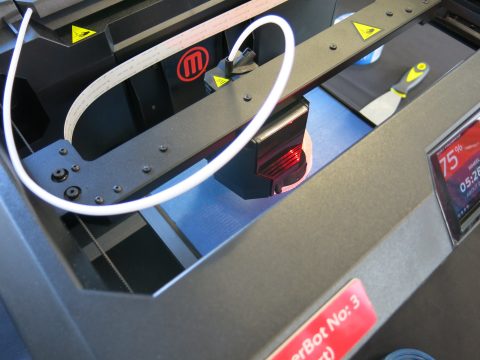A large scale empirical and legal study on the Intellectual Property Implications of the Development of Industrial 3D Printing, commissioned by the European Commission in 2018 to the Centre for Intellectual Property Policy and Management (CIPPM) was published in April 2020. The published report (spanning 257 pages), provides an in-depth exploration of the past and current industrial applications of Additive Manufacturing (AM) and…
In this context, the chapter will, first, consider the legal status of a Computer-Aided Design (CAD) file within the context of registered and unregistered design, before proceeding to consider the implications presented through infringement and possible exceptions available for users.
The book, which will be presented in two parts, aims to provide an in-depth consideration of the intellectual property implications of 3D printing in Part I, before moving on to a consideration of the legal and intellectual property challenges posed by future and emerging technologies in Part II.
This commissioned project/report for the European Commission explores the IP Implications of the Development of Industrial 3D Printing from a European perspective. The report aims to enhance the European business sector and foster innovation. Through a legal and empirical analysis, involving qualitative data drawn from interviews with 41 industry stakeholders, the findings from the project demonstrates the areas which needed to be addressed – and resolved.
The panel examine mechanisms for co-ordinating access via international IP agreements, how international investment protection might interfere with national access measures, why it is important to adequately manage the public interest in technology transfer agreements, and how 3D printing can help fight the pandemic.
In preparation for the autumn transition to online teaching of most IP courses, the UK Intellectual Property Awareness Network (IPAN) and the US Center for Intellectual Property Understanding (CIPU), held a first, well attended (70 registrants), international Zoom workshop on July 8th to share good practice and practical tips amongst IP educators.
The project commissioned by the European Commission to Bournemouth University, aims to formulate a clear picture of the Intellectual Property (IP) framework that could enhance the competitiveness of the Additive Manufacturing (AM) sector in Europe. As such, the workshop was attended by academics, practitioners, businesses and policy makers thereby bringing together key stakeholders in the field of 3D printing and IP laws.
Date: 26 September 2019 Event: New Issues in Piracy: IPTV and New Business Models Location: EU Intellectual Property Office, Alicante Spain
This chapter begins with an analysis of the protection of 3D models as artistic works. In doing so, the chapter draws a line through history, taking the reader on a journey from the Engravings Copyright Act 1735 to the Copyright, Designs and Patents Act 1988. Thereafter the chapter moves to a consideration of another component of the 3D printing process – the CAD design file, which acts as a ‘vessel’ to encapsulate a 3D model.
This chapter explores the challenges to intellectual property (IP) laws, particularly copyright law, as a result of 3D printing. This analysis is carried out from the perspective of the United Kingdom (UK) as well as European Union (EU) laws as relevant. As a starting point, the chapter provides an account of the protection of 3D models and in doing so, draws a line through history to charter the developments of artistic works.


